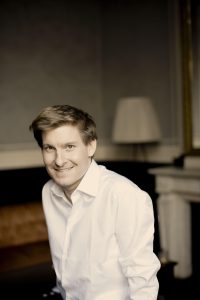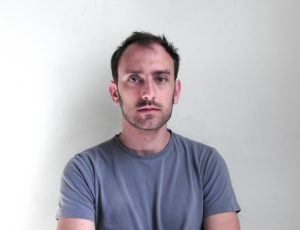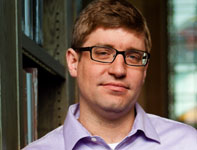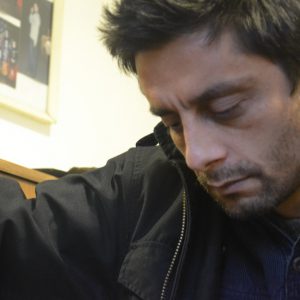Originally published as liner notes for Four4, performed by Glenn Freeman (Ogre/Ogress, 2000).
Buy the recording here.
As he approached his eightieth birthday, John Cage (1912–1992) found himself the grand old man of the avant-garde, a composer, writer, and artist who had attained notoriety and visibility on a worldwide scale. Once only a small circle of brilliant performers had been associated with his work; now ensembles and soloists awarded him commission after commission for new compositions. In order to keep up with the demand for new pieces, Cage turned once more to his long–time assistant Andrew Culver, who developed new software that enabled Cage to write music very quickly.
These new works, which occupied almost all of Cage’s compositional attention between 1987 and 1992, came to be known as the Number Pieces. Each work’s title consists only of a number written out as a word (One, Two, Fourteen, etc.) that indicates the number of performers for which the piece was composed. If Cage wrote several works for the same number of performers, he would make a further distinction in the title by adding a superscript numeral; for instance, Four (1989) is for string quartet, while Four4 (1991) is for a quartet of percussion.
As in many of Cage’s works, there is a rich network of ideas underlying the 48 completed Number Pieces. One of the most important of these is the composer’s concern for the place of the artist within society and his concern for society in general. This idea occupied his mind since his decisive adoption of indeterminacy in the 1950s. We certainly recall Cage’s famous statement about musicians in the Concert for Piano and Orchestra (1958):
I must find a way to let people be free without their becoming foolish. So that their freedom will make them noble. . . . My problems have become social rather than musical. Was that what Sri Ramakrishna meant when he said to the disciple who asked him whether he should give up music and follow him? “By no means. Remain a musician. Music is a means of rapid transportation to life everlasting.” And in a lecture I gave at Illinois, I added, “To life, period.” [John Cage, A Year from Monday: New Lectures and Writings (Middletown: Wesleyan University Press, 1967), 136.]
In the Number Pieces Cage made his final statement on this social problem: how to create a musical metaphor for an “enlightened” anarchy, a society of individuals who live together in harmony without having to sacrifice their freedom as individuals to a central governing authority. He had attacked the problem earlier from a variety of angles; in his most radical works like 0¢00² (1962) and Variations III (1963), for example, the performer realizes actions that may or may not be “musical” in the traditional sense, and she may do these actions for any length of time. Without traditional musical sounds or the “frame” that a time span provides, Cage challenged the very notions of the musical work.
For most of the Number Pieces, however, Cage decided to specify the length of time that each piece would last, perhaps because he wrote so many of them for musicians that he did not personally know. But in order to introduce an element of unpredictability and flexibility within a stable total duration (thus bringing the music closer to his ideal of an anarchistic environment), Cage turned to elastic “measures” that he called time brackets. He describes the time brackets in his late autobiographical mesostic, Composition in Retrospect (1981/1988):
for some time now i haVe been using / time-brAckets / sometimes they aRe / fIxed / And sometimes not / By fixed / i mean they begin and end at particuLar / points in timE
when there are not pointS / Time / foR both beginnings and end is in space / the sitUation / is muCh more flexible / These time-brackets / are Used / in paRts / parts for which thEre is no score no fixed relationship
it was part I thought of a moVement in composition / Away / fRom structure / Into process / Away / from an oBject having parts / into what you might caLl / wEather
now i_See / That / the time bRackets / took_Us / baCk from / weaTher which had been reached to object / they made an earthqUake / pRoof music / so to spEak
[John Cage, Composition in Retrospect (Cambridge: Exact Change Books, 1993), 34–35.]
Cage had used time brackets for a long time, for instance in the 1952 Untitled Event at Black Mountain College. In the Number Pieces, however, the time brackets are smaller and more subtle. In Four4, as an example, the music in Player I’s first time bracket can begin any time between 0¢00² and 1¢00²; it must end sometime between 0¢40² and 1¢40². On the other hand, Player IV can begin the music in his first time bracket any time between 0¢00² and 0¢15² and must end it between 0¢10² and 0¢25². None of the time brackets for any of the four players has an exact correspondence with any other, though there is always the possibility that the sounds might overlap. In this way, the performers in Cage’s Number Pieces can participate in a unique kind of ensemble and yet retain their own sense of musical identity and individuality. In conversations with Joan Retallack near the end of his life, Cage described this situation beautifully:
JC [John Cage]: You would go to a concert and you would hear these people playing without a conductor, hmm? And you would see this group of individuals and you would wonder how in hell are they able to stay together? And then you would gradually realize that they were really together, rather than because of music made to be together. In other words, they were not going one two three four, one two three four, hmm? But that all the things that they were sounding were together, and that each one was coming from each one separately, and they were not following a conductor, nor were they following an agreed-upon metrics. Nor were they following an agreed-upon . . . may I say poetry?—meaning feeling in quite a different way at the same time that they were being together.
JR [Joan Retallack]: So that really is a kind of microcosm of an—
JC: Of an anarchist society, yes. That they would have no common idea, they would be following no common law. The one thing that they would be in agreement about would be something that everyone is in agreement about . . . and that is, what time it is.
[John Cage and Joan Retallack, Musicage: Cage Muses on Words, Art, Music; John Cage in Conversation with Joan Retallack (Hanover: University Press of New England, 1996), 50–51.]
Now the actual sound content of Cage’s time brackets in the Number Pieces is equally subtle: usually each time bracket contains only a single pitch (as in Four4); or perhaps two or three pitches connected by a slur; or more exceptionally, for instance in Thirteen (1992), a longer string of pitches. The percussion parts in most of these works, and in Four4, are for instruments that Cage never specifies but simply refers to by number. By leaving the choice of instruments up to the performers, I believe Cage was expressing not a disinterest in the choice but rather a Zen-like absence from choice, the ultimate certainty that his ego need not influence the sounds that would appear in his percussion music. This absence and the extreme economy of content gives Cage’s Number Pieces a transparency that is always a surprise for those who know the composer’s more extravagant or virtuosic works—27¢10.554² for a Percussionist (1956), the Concert, HPSCHD (1969), Roaratorio (1979), or the Freeman Etudes for violin (1977–80/1989–90). And most of the works are longer than twenty minutes, some much longer than that: Four4 lasts 72 minutes in performance.
Hearing a piece for such a length of time that consists of very few sounds is a very unusual adventure. In my own experiences, I have a sensation of being neither awake nor asleep, present and centered but experiencing the passage of time and listening in a manner totally unfamiliar to me. Another friend of mine described it as being compelled to be with yourself for a very long time. Whatever the impression one has, it is clear that the Number Pieces give a memorable impression of spaciousness and tranquility.
Yet it is a misconception to see these works as the unique and crystalline final monuments of a master composer who expected death at any moment. Many of Cage’s earlier works are just as transparent, from the famous 4¢33² (1952) to Inlets (1977), for four conch shells filled with water. One quality that unites all of these pieces is their amazing emphasis on “ordinary life”—all that performers need to have is devotion both to the act of producing a sound and to hearing the sounds around them. Overly dramatic display has no place in these late works, but curiosity and awareness do. This exuberance for everyday life and for discovery is at the very heart of Cage’s artistic legacy. It is no surprise, then, that one of the artist’s favorite sayings was “Nichi nichi kore ko nichi”—“Every day is a beautiful day.”




